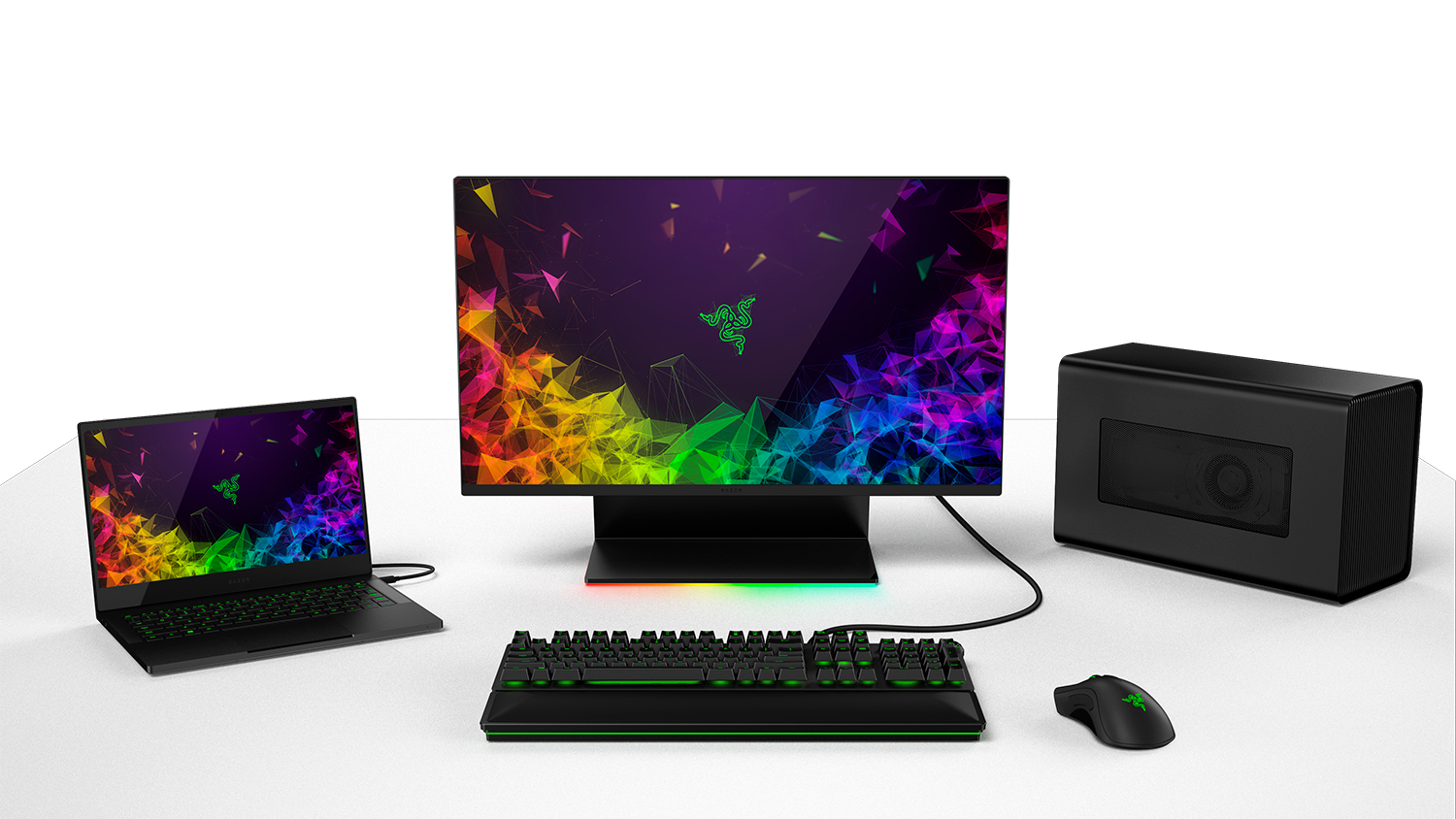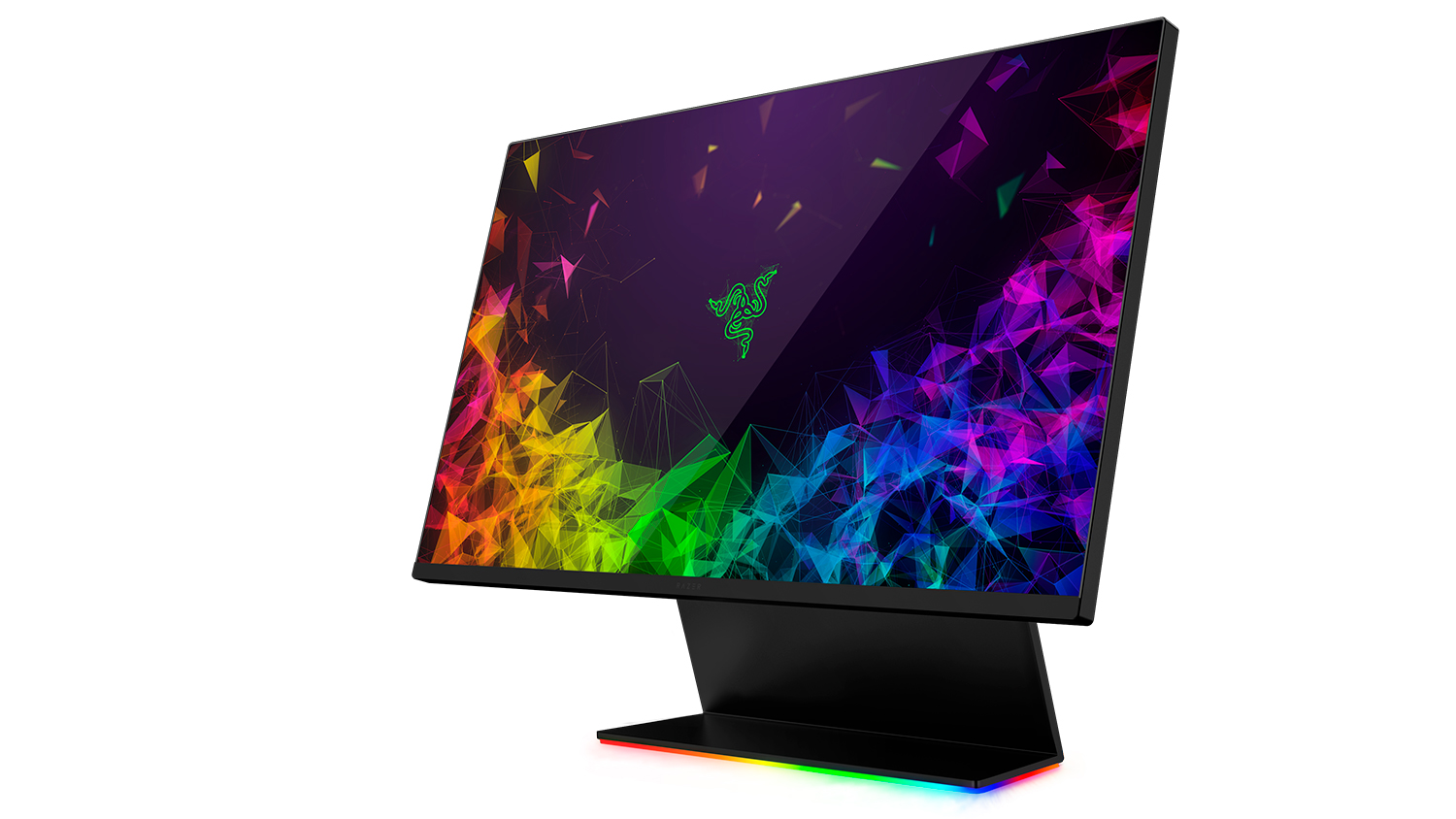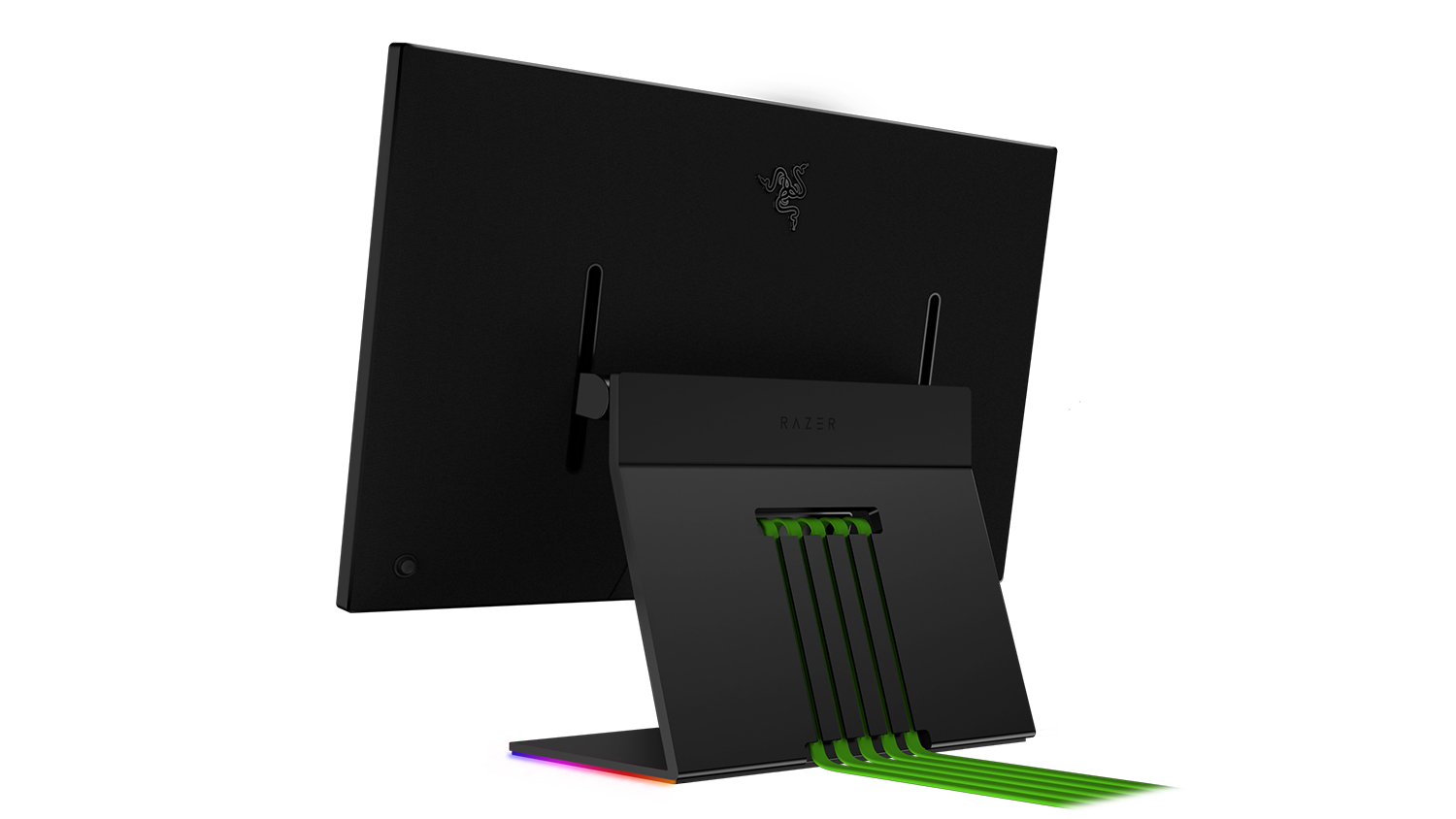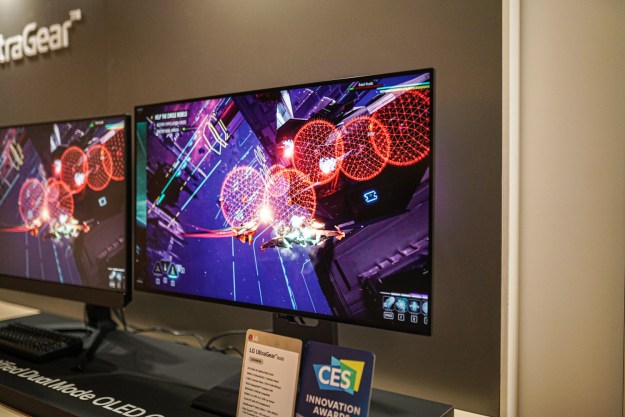This year at CES, Razer announced its entrance into a new product category: Gaming monitors. The Raptor 27 is the company’s first true attempt at a gaming monitor, designed and manufactured from the ground-up by Razer.
The 27-inch screen is squeezed into an “edge-to-edge” frame with 2.3mm bezels on each side. The stand and base are made of machined aluminum with a matte-black finish to match the styling of the Razer Blade and recent Razer Blade Stealth laptops. Meanwhile, the backplate of the monitor blends a fabric material with metal for what Razer calls a “touch of elegance.”
Despite how awesome games look in 4K, 1440p has become the go-to high-resolution option for gamers looking for higher frame rates, and that’s just what you get here. The Raptor 27 uses an IPS display with a screen resolution of 2,560 x 1,440 and 178 degree viewing angles. Along with that is a 144Hz refresh rate to ensure you see smooth gameplay when breaking over a hundred FPS (frames per second). Although the monitor doesn’t include support for Nvidia’s G-Sync adaptive sync tech, the Raptor 27 does include support for AMD’s FreeSync.
Razer says the monitor will show 95 DCI-P3 wide color gamut for vibrant colors, supported by HDR compatibility and a max brightness of 420 nits.
Key Specs
- Screen size: 27 inches
- Resolution: 2,560 x 1,440
- Panel type: IPS
- Refresh rate: 144Hz
- Response rate: 4ms with overdrive, 1ms with motion blur, 7ms typical
- Connectivity: HDMI 2.0, DisplayPort, USB-C, 2 x USB-A
- Weight: 25.4 pounds
The stand is both height and tilt-adjustable, allowing for easier access to the down-firings ports. Speaking of ports, the Raptor 27 includes the typical array of connectivity options, including HDMI, DisplayPort, USB-C, and two USB-A ports. The USB-C port does allow power delivery, though Razer indicates that it will only allow “lower wattage devices to be charged while connected to the monitor.”
The Razer Raptor 27’s base comes lined with strips of Chroma-powered LEDs that can be customized and controlled through Razer’s own Synapse 3 software.
Razer CEO Min-Liang Tan called out the untapped potential in a gaming monitor made specifically by Razer in a press release proceeding the announcement. “Razer has worked alongside partners in the past to bring the Razer experience to monitors, but the full potential was never fully realized. We have decided to tackle this space on our own and are very excited to expand our presence to include desktop displays.”
Razer has partnered with Lenovo in the past to create Razer-branded desktop towers and monitors, such as the Lenovo Y27g “Razer Edition” curved gaming monitor, but as Tan indicated, they never felt like true Razer products.
Razer called the monitor an “early-design-phase model,” with actual units planned to ship later this year. When it eventually does, the Razer Raptor 27 will cost $700 and be available in the United States and Canada through the online Razer Store.
Editors' Recommendations
- Razer made the best gaming mouse even better
- 2 gaming laptops you should buy instead of the Razer Blade
- I finally stopped neglecting my second monitor, and you should too
- Why Alienware remains the undisputed champ of OLED gaming monitors
- Glasses-free 3D gaming can be amazing — but only if it’s done right







